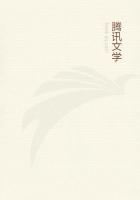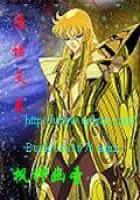Nay, it may well be that on those journeys into remote regions he came across now and then a specimen of the pauper gentleman, with his lean hack and his greyhound and his books of chivalry, dreaming away his life in happy ignorance that the world had changed since his great-grandfather's old helmet was new. But it was in Seville that he found out his true vocation, though he himself would not by any means have admitted it to be so. It was there, in Triana, that he was first tempted to try his hand at drawing from life, and first brought his humour into play in the exquisite little sketch of "Rinconete y Cortadillo," the germ, in more ways than one, of "Don Quixote."
Where and when that was written, we cannot tell. After his imprisonment all trace of Cervantes in his official capacity disappears, from which it may be inferred that he was not reinstated. That he was still in Seville in November 1598 appears from a satirical sonnet of his on the elaborate catafalque erected to testify the grief of the city at the death of Philip II, but from this up to 1603 we have no clue to his movements. The words in the preface to the First Part of "Don Quixote" are generally held to be conclusive that he conceived the idea of the book, and wrote the beginning of it at least, in a prison, and that he may have done so is extremely likely.
There is a tradition that Cervantes read some portions of his work to a select audience at the Duke of Bejar's, which may have helped to make the book known; but the obvious conclusion is that the First Part of "Don Quixote" lay on his hands some time before he could find a publisher bold enough to undertake a venture of so novel a character; and so little faith in it had Francisco Robles of Madrid, to whom at last he sold it, that he did not care to incur the expense of securing the copyright for Aragon or Portugal, contenting himself with that for Castile. The printing was finished in December, and the book came out with the new year, 1605. It is often said that "Don Quixote" was at first received coldly. The facts show just the contrary. No sooner was it in the hands of the public than preparations were made to issue pirated editions at Lisbon and Valencia, and to bring out a second edition with the additional copyrights for Aragon and Portugal, which he secured in February.
No doubt it was received with something more than coldness by certain sections of the community. Men of wit, taste, and discrimination among the aristocracy gave it a hearty welcome, but the aristocracy in general were not likely to relish a book that turned their favourite reading into ridicule and laughed at so many of their favourite ideas. The dramatists who gathered round Lope as their leader regarded Cervantes as their common enemy, and it is plain that he was equally obnoxious to the other clique, the culto poets who had Gongora for their chief. Navarrete, who knew nothing of the letter above mentioned, tries hard to show that the relations between Cervantes and Lope were of a very friendly sort, as indeed they were until "Don Quixote" was written. Cervantes, indeed, to the last generously and manfully declared his admiration of Lope's powers, his unfailing invention, and his marvellous fertility; but in the preface of the First Part of "Don Quixote" and in the verses of "Urganda the Unknown," and one or two other places, there are, if we read between the lines, sly hits at Lope's vanities and affectations that argue no personal good-will; and Lope openly sneers at "Don Quixote" and Cervantes, and fourteen years after his death gives him only a few lines of cold commonplace in the "Laurel de Apolo," that seem all the colder for the eulogies of a host of nonentities whose names are found nowhere else.
In 1601 Valladolid was made the seat of the Court, and at the beginning of 1603 Cervantes had been summoned thither in connection with the balance due by him to the Treasury, which was still outstanding. He remained at Valladolid, apparently supporting himself by agencies and scrivener's work of some sort; probably drafting petitions and drawing up statements of claims to be presented to the Council, and the like. So, at least, we gather from the depositions taken on the occasion of the death of a gentleman, the victim of a street brawl, who had been carried into the house in which he lived. In these he himself is described as a man who wrote and transacted business, and it appears that his household then consisted of his wife, the natural daughter Isabel de Saavedra already mentioned, his sister Andrea, now a widow, her daughter Constanza, a mysterious Magdalena de Sotomayor calling herself his sister, for whom his biographers cannot account, and a servant-maid.
Meanwhile "Don Quixote" had been growing in favour, and its author's name was now known beyond the Pyrenees. In 1607 an edition was printed at Brussels. Robles, the Madrid publisher, found it necessary to meet the demand by a third edition, the seventh in all, in 1608. The popularity of the book in Italy was such that a Milan bookseller was led to bring out an edition in 1610; and another was called for in Brussels in 1611. It might naturally have been expected that, with such proofs before him that he had hit the taste of the public, Cervantes would have at once set about redeeming his rather vague promise of a second volume.
But, to all appearance, nothing was farther from his thoughts. He had still by him one or two short tales of the same vintage as those he had inserted in "Don Quixote" and instead of continuing the adventures of Don Quixote, he set to work to write more of these "Novelas Exemplares" as he afterwards called them, with a view to making a book of them.














